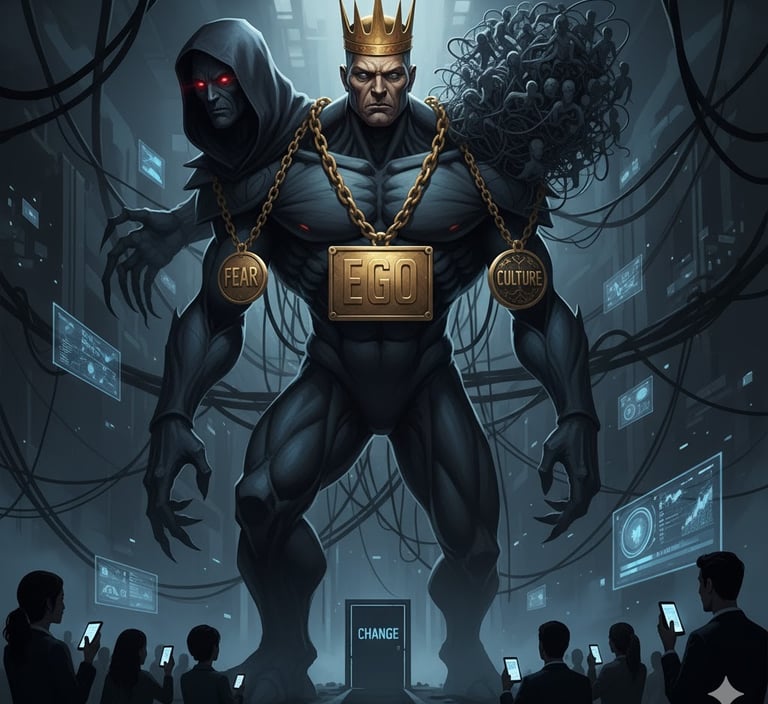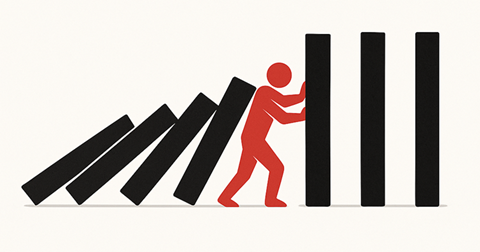Why Change Gets FEC'D UP
Most change initiatives don’t fail because people hate change. They fail because Fear, Ego, and Culture quietly shape behavior in ways that protect safety, identity, and familiarity.
FEC’d UP: How Fear, Ego, and Culture Sabotage Change — and What You Can Do About It reveals how these forces show up in real life — in boardrooms, teams, and even within ourselves — and offers practical tools to see, name, and shift them.
This isn’t a quick-fix or blame game. It’s a guide to understanding the human side of resistance — and how awareness, language, and courage can turn stalled efforts into steady progress.


What You’ll Gain
A deeper understanding of why change feels so hard, even when it’s needed.
Tools for recognizing FEC-based behavior in yourself, your team, or your culture.
Insight into how to lead change with empathy and clarity, not fear and force.
Language to help turn resistance into dialogue — and dialogue into action.
FEC’d UP! introduces a practical approach that helps leaders understand why change efforts stall — and what it takes to create the conditions where progress can begin again.
It doesn’t replace traditional change models; it complements them by focusing on the human side of resistance — the fears, identities, and cultural forces that quietly shape every decision.


The Meaning Behind the Logo
Like the three forces that resist change — Fear, Ego, and Culture — the FEC’d UP logo represents three realities every leader faces in times of change.
The Falling Dominoes:
The dominoes on the left represent the cascading impact of change. Change one thing, and everything connected to it starts to shift. Momentum can be hard to stop once it starts — in either direction.
The Person in the Middle:
The red figure represents the people caught in the middle of it all — often playing multiple roles:
The Stabilizer, trying to keep the organization steady and functional while everything around it moves.
The Change Agent, pushing forward and adapting to new realities in a fast-moving political, business, and social climate.
And the Resistor, trying to stop one more domino from falling, simply because change fatigue has set in.
The Upright Dominoes:
The standing dominoes represent what’s still holding — the parts of an organization that can stay steady if leaders understand what’s really pushing and pulling at them.
Together, they form a picture of what it means to lead through change: balancing progress with stability, courage with caution, and motion with meaning.
Who It's For
This book is written for anyone who’s ever led, coached, or cared about progress — and watched it stall.
Whether you’re a leader, consultant, educator, or individual navigating personal transformation, FEC’d UP gives you language for what you’ve felt but couldn’t quite name — and insight to move forward with purpose.
Questions You Might Be Asking
“Isn’t this just another change model?”
No. FEC’d UP! doesn’t replace other models — it explains what many of them miss or gloss over - the human software behind resistance: Fear, Ego, and Culture.
“Does this only apply to business?”
Not at all. While the book is written for leaders and organizations, the same principles apply anywhere people are trying to change, adapt, or grow — at work, at home, or in the community.
“Why focus on Fear, Ego, and Culture?”
Because those three forces shape how we respond to everything new. Understanding them doesn’t guarantee change success — but it makes it possible.
“What makes this different from other books on change?”
Most books focus on what to change or how to do it. FEC’d UP! focuses on why people resist change — and what you can do when logic and incentives no longer work.
© 2025. All rights reserved.